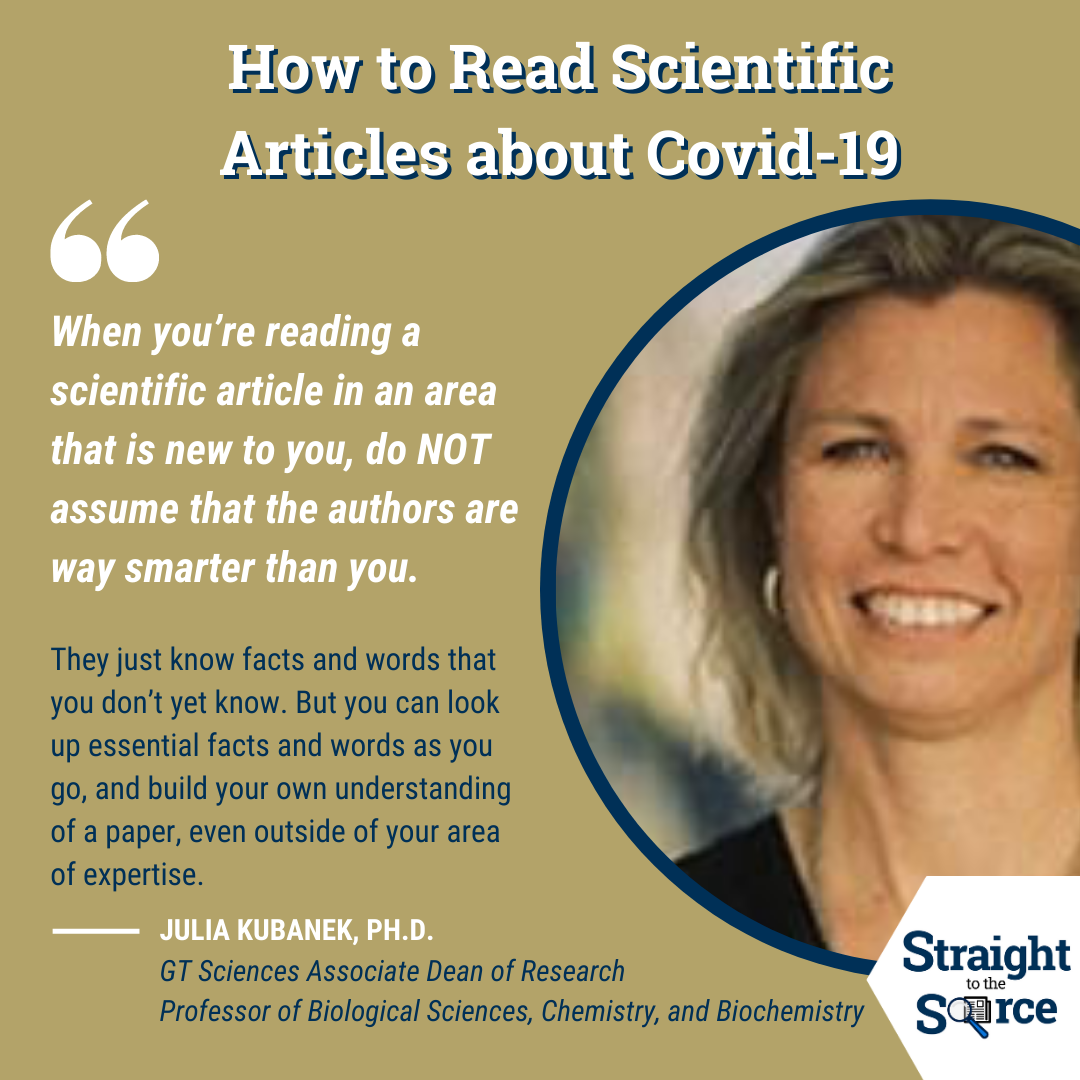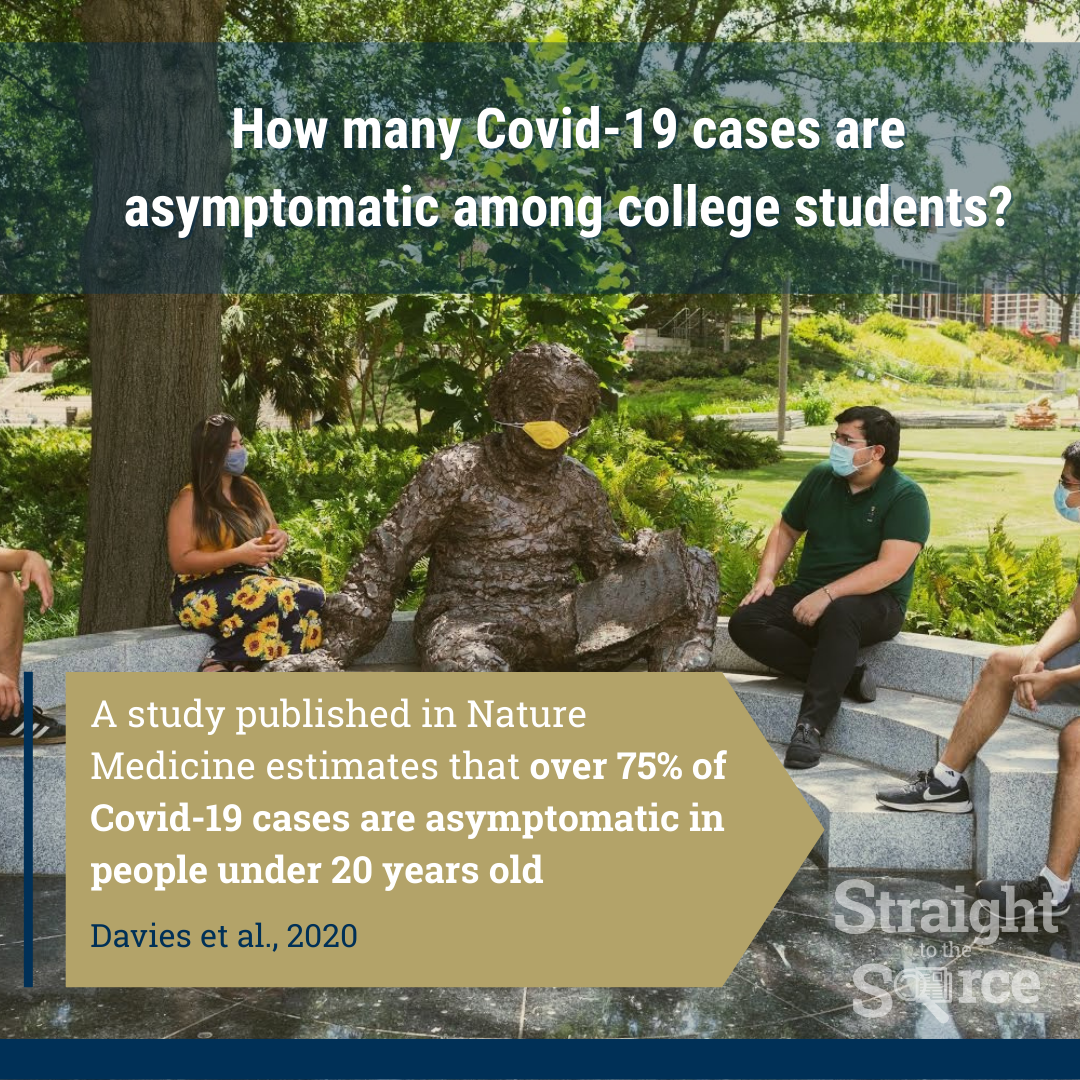
Jan 12, 2021 - Atlanta, GA
As Covid-19 spread throughout the U.S. in 2020, so did misinformation about the disease that's caused by the novel coronavirus. From conspiracy theories about the origins of the virus to confusion about effects, spread, and treatment, it became more difficult over time for individuals seeking reliable information to distinguish fact from fiction across their social media and news feeds. When classes began in the fall semester, members of the Georgia Tech community and beyond also sought out evidence-based and peer-reviewed information about a number of detailed questions related to the virus — many of which were being actively answered through ongoing research around the globe.
The call for information about Covid-19 was answered in many ways by members across the Institute – in classes, virtual town halls, informational pages, emails, signage, Georgia Tech's Helping Stories series, and even a handful of informal “Ask Me Anything” posts with Tech's faculty and research experts. One such collaborative effort to answer these questions found its home on social media.
Addressing the community’s questions by getting the perspective of Georgia Tech experts on the latest developments and findings in Covid-19 research, the College of Sciences kicked off #StraightToTheSource on Twitter, Instagram, and Facebook in November 2020. The campaign provides tips and tools on how to seek out and interpret scientific findings from news articles and scientific journal articles alike.
Building to tools to find accurate information
While there may be a barrage of news stories about Covid-19, not all of them accurately interpret available data and facts. They can be especially misleading for young people. In a study by a Covid-19 Consortium surveying more than 20,000 people across the U.S., people under 25 years of age were most likely to believe false claims about Covid-19. Comprised of researchers from Harvard, Northwestern, Northeastern, and Rutgers Universities, the Consortium also found that belief in false Covid-19 claims was associated with a lower intention to seek an eventual vaccine.
To learn how to spot a trustworthy news source, #StraightToTheSource spoke to Jennifer Leavey, principal academic professional in the College of Sciences and one of the leaders of a class on the biology behind Covid-19. “It’s easy to get misled by headlines,” shares Leavey. “Well-written news pieces use a variety of primary sources including quotes from experts, original scientific publications, and information provided by government agencies. Be wary of clickbait!” The big take away? Look for articles citing peer-reviewed research and avoid sensational language.
When a news article that cites peer-reviewed research doesn’t have enough information to draw a conclusion about a topic, readers can also turn to the scientific article cited to help fill in the blanks. But scientific journal articles can be intimidating. To empower the community with the tools to decipher scientific articles, #StraightToTheSource spoke to Julia Kubanek, professor in the Schools of Biological Sciences, Chemistry and Biochemistry and associate dean of Research for the College of Sciences.
“When you’re reading a scientific article in an area that is new to you, do not assume that the authors are way smarter than you,” explains Kubanek. “They just know facts and words that you don’t yet know. But you can look up essential facts and words as you go, and build your own understanding of a paper — even outside of your area of expertise.”
When reading a scientific paper, Kubanek suggests a non-linear route. “Scientific papers don’t have to be read from start to finish, one page at a time,” says Kubanek. “I start with the abstract to get the overall gist. But from there I jump to the figures – they are usually where I can find the most important data. I dissect the figures, using the figure legends to help me understand the data in the figures themselves. The Discussion is where I can find the authors’ opinion of what their conclusions are, but I judge the conclusions for myself from my interpretation of the figures. The Introduction is useful for background information, but I skim that at best. I only read the Methods if I want to repeat the experiments myself, which is hardly ever.”
As for the main message of the paper, Kubanek suggests you decide it for yourself. “I think that every scientific article should be able to be summarized in a single sentence, a kind of take-home message,” suggests Kubanek. “When I’m reading a new paper, I try to build my own take-home message from the paper, turning it over in my mind as I make my way through the paper.”
The big take away? Don’t let complicated language prevent you from reading scientific papers and interpreting the results yourself.
Learning more about Covid-19 antibodies
After building the tools to dissect and interpret Covid-19 news, #StraightToTheSource spoke with Georgia Tech researchers to answer the community’s questions about Covid-19. One of the questions on the forefront of many minds: how long do Covid-19 antibodies last post-infection?
To find out, #StraightToTheSource dove into a paper published by Ania Wajnberg et al. in the journal Science with Patton Distinguished Professor Greg Gibson, who teaches and researches in the School of Biological Sciences. "Serum antibodies (for Covid-19) generally first appear a week to 10 days after infection, and then persist — albeit with some decline — for at least 5 months, and remain neutralizing in the majority of people," explains Gibson.
Gibson's statement was confirmed by Wajnberg et al., where it was found that Covid-19 antibodies are detectable in the blood at least 5 months after infection and perhaps longer. These antibodies infection still have neutralization activity and can fight the virus according to the study. "Although this cannot provide conclusive evidence that these antibody responses protect from reinfection," says Wajnberg et al., "we believe it is very likely that they will decrease the odds ratio of reinfection and may attenuate disease in the case of breakthrough infection."
While Gibson clarified the nature of Covid-19 antibodies post-infection, it was still unclear to curious Georgia Tech students exactly how the virus might manifest in the early days of infection — do most people show symptoms when they are contagious, and if not, why? To investigate this, #StraightToTheSource studied a paper published in Nature Medicine, which estimated that, remarkably, over 75% of Covid-19 cases might be clinically asymptomatic in people under 20 years old — meaning that younger people can unknowingly spread the virus to others without showing symptoms. This further bolstered the importance of weekly testing to detect infections early to help isolate and prevent spread, as testing may be the only way that certain individuals can confirm if they have the virus.
Up next: Vaccines and beyond
It has been a year since Covid-19 entered the United States. With the development and distribution of vaccines, a renewed hope to stamp out Covid-19 is on our shared horizon. Along with this hope appear new questions and answers. As we kick off a new year and phase of the pandemic, #StraightToTheSource will continue to share tips and techniques, evidence-based answers, and peer-reviewed data to help sort through news feeds and headlines — straight from our community of faculty and research experts.


